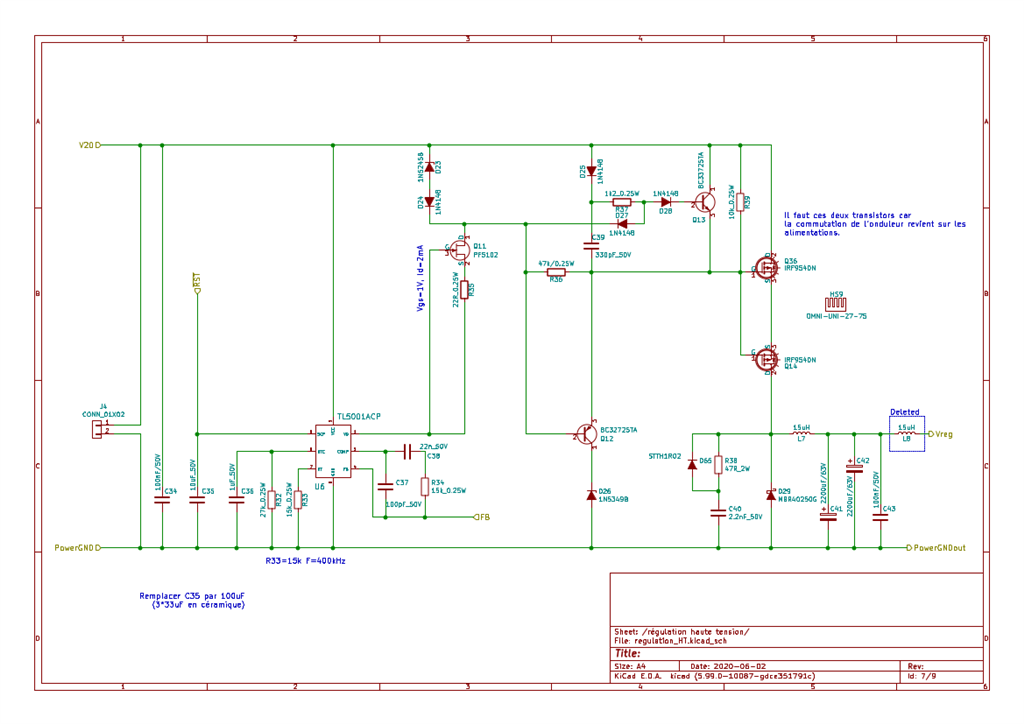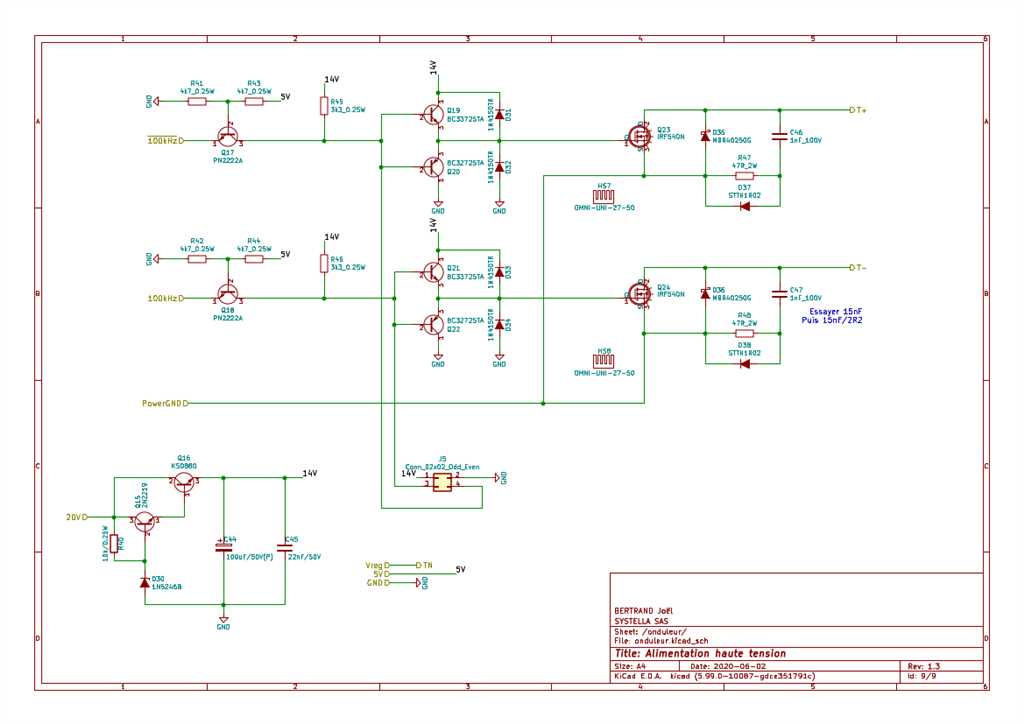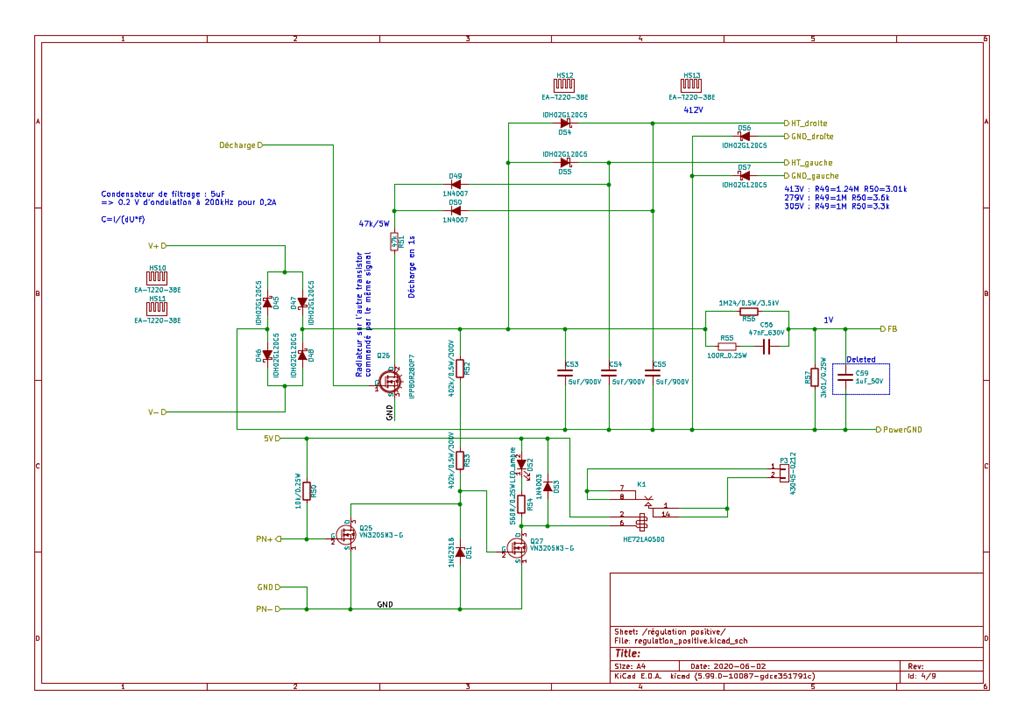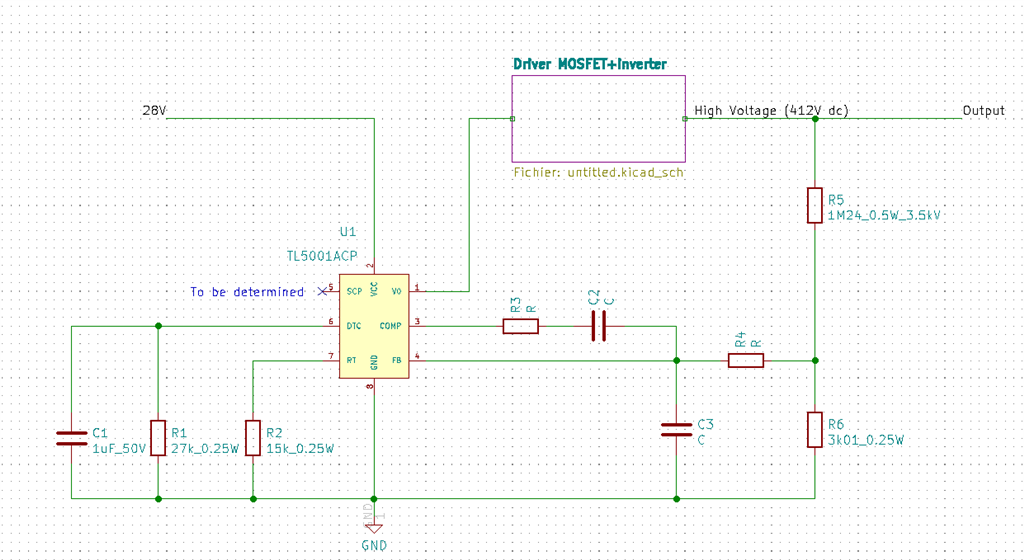Other Parts Discussed in Thread: TL5001,
Hello,
I'm trying to use a TL5001 with a transformer in loop. Sometimes ti runs as expected, sometimes not. I'm pretty sure that my issue comes from compensation network but I'm unable to find a solution.
My design:

V20 is a 28V power supply (no regulation, it directly comes from a 230V/20Vac transformer followed by a rectifier network, a lot of condensators (38 * EKY-500ELL272MM40S) with of course a preload and discharge circuit. For my tests, as TL5001A is not stable, I have removed C35.

This circuit generates two commands for gates of a push-pull inverter (@ 100 kHz). 100 kHz signal is generated by a crystal.

T+, TN and T- are directly connected to a transformer.

Output of this transformer is rectified and filtered. Feedback is taken after this filter.
Components marked "deleted" are removed from PCB. Converter starts but can enter in a unstable state : it starts, stops and quickly restarts. I know that transformer is a low pass filter, but its bandwith is greater than 100 kHz and main regulator works at 400 kHz. How can I solve this compensation network ?
Best regards,
JB


 I understand that high pass filters in datasheets compensate phase shift given by LC filter. But in my case, I don't have a second order filter... Comment are welcome.
I understand that high pass filters in datasheets compensate phase shift given by LC filter. But in my case, I don't have a second order filter... Comment are welcome.